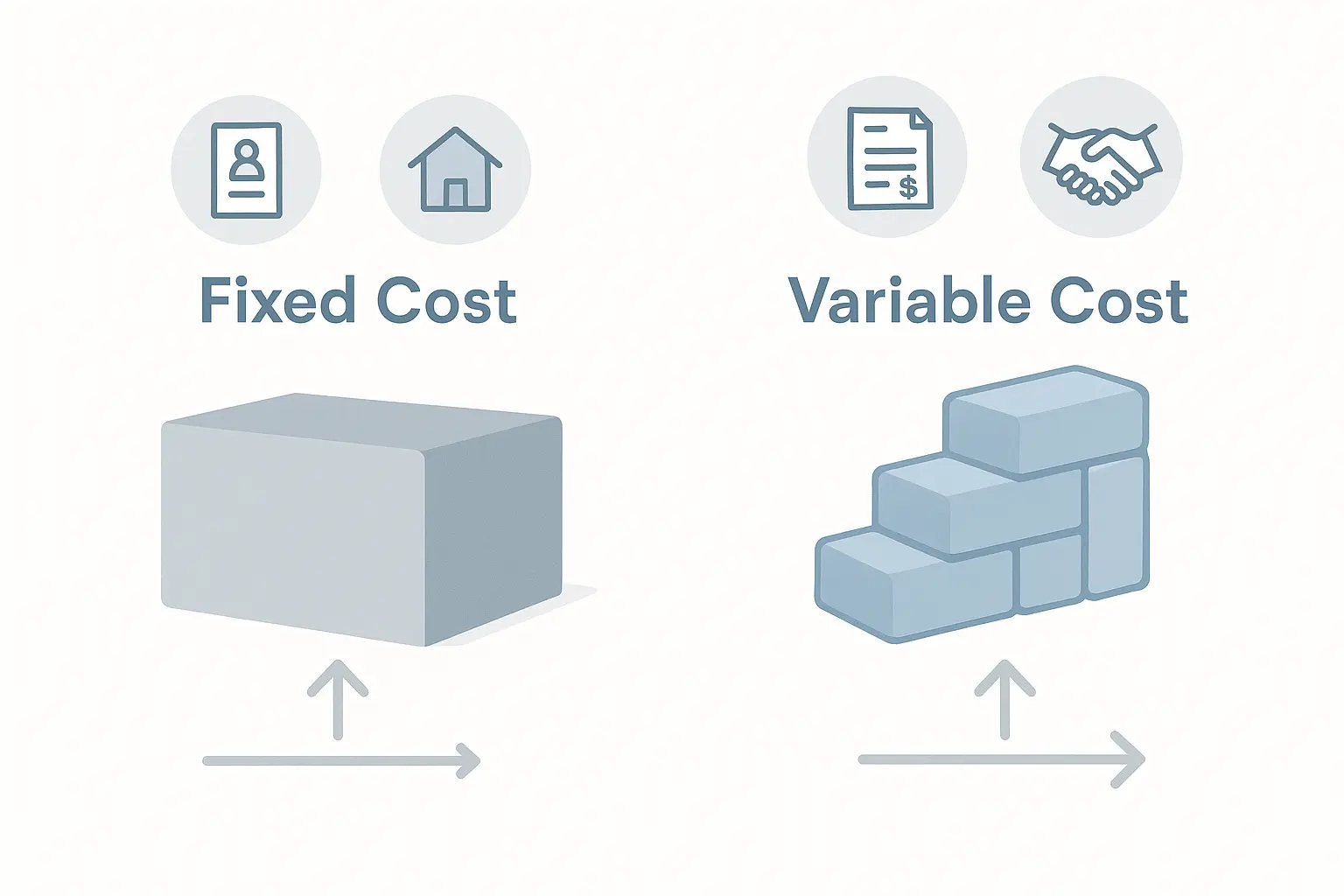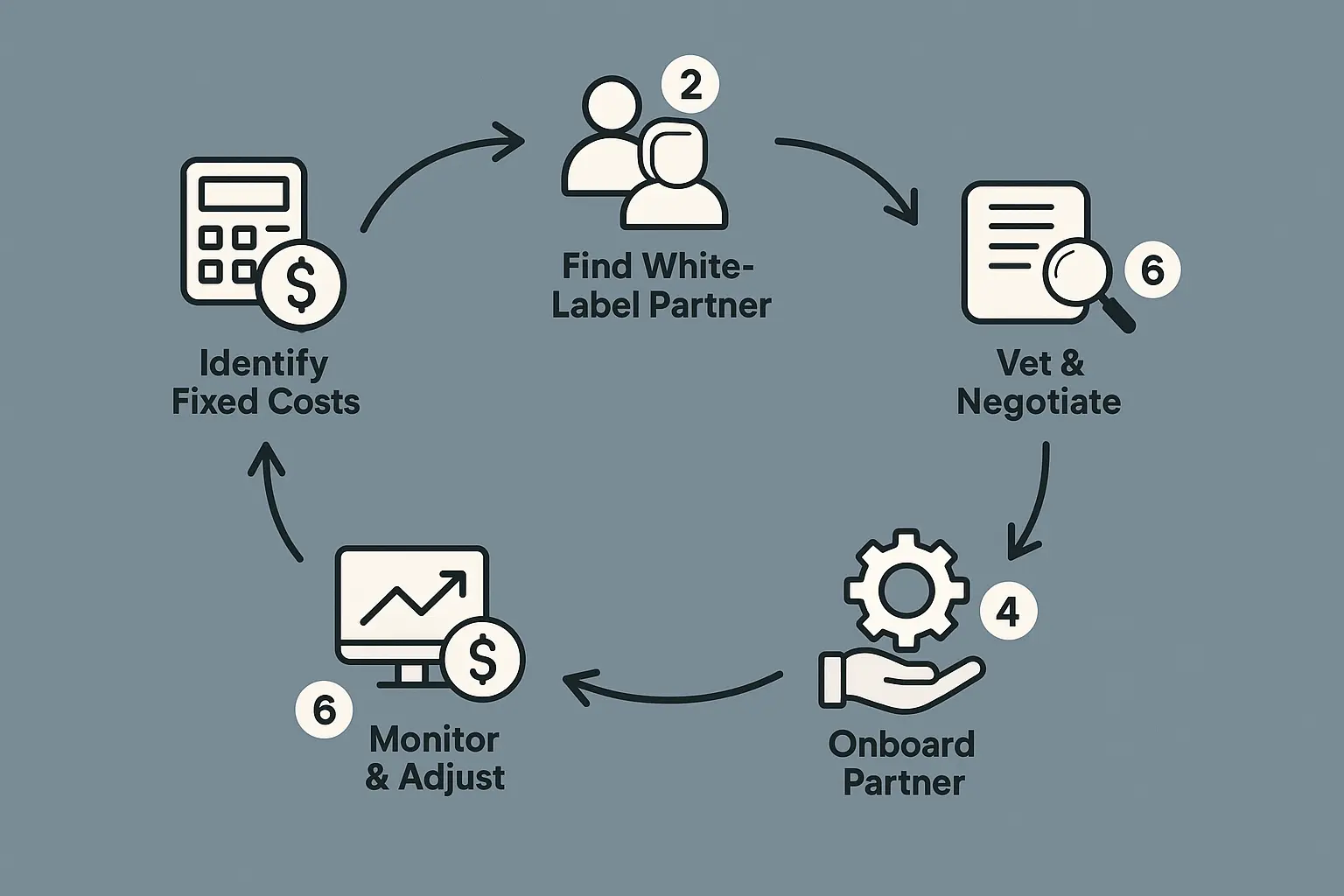You just landed the biggest client of your agency’s life. Champagne corks should be flying, but instead, a quiet panic sets in: “How are we going to handle this workload? I need to hire—fast.”
Or perhaps you’ve been on the other side. A major client churns unexpectedly, and now you’re staring at a payroll full of talented people with not enough work to go around, your cash flow shrinking by the day.
Welcome to the agency rollercoaster, a ride fueled by a financial model that’s fundamentally broken for most. While the average agency scrapes by on a tight 11–20% profit margin, top performers consistently hit 30% or more. Their secret isn’t just being better at sales; it’s being smarter about costs. They’ve learned how to escape the fixed cost trap.
The Fixed Cost Trap Most Agencies Don’t See
In any business, you have two types of costs:
-
Fixed Costs: Expenses that stay the same regardless of your revenue, such as salaries, rent, and software subscriptions.
-
Variable Costs: Expenses that rise and fall directly with your revenue, like project-specific materials or, as we’ll explore, partner fees.
Here’s the problem: research shows that fixed costs, primarily payroll, account for a staggering 60-70% of a traditional agency’s total expenses.
This means the bulk of your budget is locked in, whether you’re having a record quarter or a tough month. Your expenses become a heavy, constant anchor while your revenue ebbs and flows like the tide—an imbalance that creates a cash flow nightmare.
This rigidity also leads to the “utilization puzzle.” The ideal billable utilization rate for an employee—the amount of their time spent on client work—is around 75–85%. But when work slows down, it’s easy for that number to dip below 60%.
It’s a painful “aha moment” for many owners: you’re paying 100% of a salary for 60% (or less) of its productive output. Your profitability is leaking, and that largest fixed cost is the source.
The Hidden Toll of the “Hire to Scale” Mindset
The traditional answer to growth has always been simple: sign more clients, hire more people. But a HubSpot study found that “hiring to scale” is one of the top three challenges for growing agencies. Why? Because this mindset locks you into a painful feast-or-famine cycle.
Feast: You win new business and scramble to hire. You pay recruitment fees, spend weeks onboarding, and finally get your new team member up to speed—just as the project scope changes.
Famine: The market shifts or a client leaves, and now you’re overstaffed. You face the gut-wrenching decision to either carry the dead weight and destroy your margins or lay off a great person and crush team morale.
This isn’t just inefficient; it’s incredibly risky. During economic downturns, agencies with high fixed costs are 40% more likely to face cash flow crises compared to those with more flexible, variable cost structures. Relying solely on in-house hiring builds a fragile business—one that can shatter with the loss of a single large client.
The Strategic Shift: Building a Variable Cost Engine
What if you could detach your delivery capacity from your permanent headcount, allowing your costs to scale up and down in perfect sync with your revenue? This is the core idea behind a variable cost model, and it’s more achievable than you might think.
The strategy involves building a hybrid model:
-
A Lean, In-House Core Team: This is your brain trust—the senior strategists, client managers, and creative directors who own the client relationship and guide the vision.
-
A Variable Execution Layer: This is your on-demand engine, a flexible resource you can tap into for specific tasks like technical SEO, content creation, or link building, all without adding to your permanent payroll.

This is where specialized partners providing white-label SEO services become more than an operational asset—they become a powerful financial tool. A true white-label partner acts as an extension of your team, delivering work under your brand. You plug them in when you land a new client and unplug them if that client leaves.
Your cost for that service is now 100% variable, tied directly to revenue. This model transforms your agency’s financial health. You’re no longer paying for bench time; you’re paying for productive output—and only when you need it.
The Real-World Benefits of a Flexible Agency Model
Adopting a variable cost structure isn’t just about surviving downturns; it’s about building a stronger, more profitable agency for the long term.
-
Radically Improved Profitability: Converting your largest fixed cost (execution salaries) into a variable one protects your margins. Your expenses rise only when revenue does, ensuring profitability on every client.
-
De-Risked Operations: Lose a client? Your associated costs can disappear with them. Win a massive project? You can scale delivery capacity overnight without a single job interview. Your cash flow becomes predictable and resilient.
-
Laser Focus on Growth: With execution handled by a trusted partner, your core team is free to focus on what really grows the business: strategy, sales, and deepening client relationships. For many firms, strategic SEO outsourcing for agencies is the fastest path to this agile model.
-
Instant Access to Expertise: Instead of spending a fortune and years building an in-house SEO department, you can plug into a partner’s established expertise and systems from day one, offering best-in-class service to your clients immediately.
Shifting your mindset from “hiring” to “partnering” for execution is the single most powerful lever you can pull to build a more resilient and profitable agency.

Frequently Asked Questions
What’s the difference between using a freelancer and a white-label partner?
While both represent a variable cost, a white-label partner is designed for agency scale. They offer standardized processes, dedicated support, robust security, and the capacity to handle multiple clients simultaneously. Freelancers are great for one-off tasks, but partners provide a reliable, scalable system for ongoing service delivery.
Will I lose control over the quality of the work?
Not with the right partner. A professional white-label provider works for you, not just your client. They should adopt your agency’s standards, use your branded templates, and operate as a seamless, invisible extension of your in-house team. Vetting a partner’s processes and communication is key.
How does pricing typically work with a white-label partner?
Pricing is usually on a per-client or per-project basis. This could be a flat monthly retainer for a client’s SEO campaign or a one-time fee for a technical audit. The key is that the cost is directly tied to a specific piece of client revenue, making it a true variable expense.
Is this model only for new or small agencies?
Not at all. This model is for any agency that wants to scale more profitably and with less risk. Large agencies use it to augment their existing teams, handle overflow work, or launch new service lines without a massive upfront investment. Solo consultants use it to offer comprehensive services they couldn’t possibly deliver alone.

Your Next Move
Escaping the fixed cost trap is a strategic imperative for any agency owner who wants to build a business that thrives in any economic climate. It’s about shifting your perspective from seeing people as fixed assets to seeing execution as a flexible, on-demand resource.
By embracing a variable cost structure, you’re not just optimizing your finances—you’re building a more agile, resilient, and ultimately more valuable agency.
Ready to see how this model could reshape your agency’s future? Understanding the role of a true agency SEO partner is the perfect place to start.

